Best Brush for a Great Dane
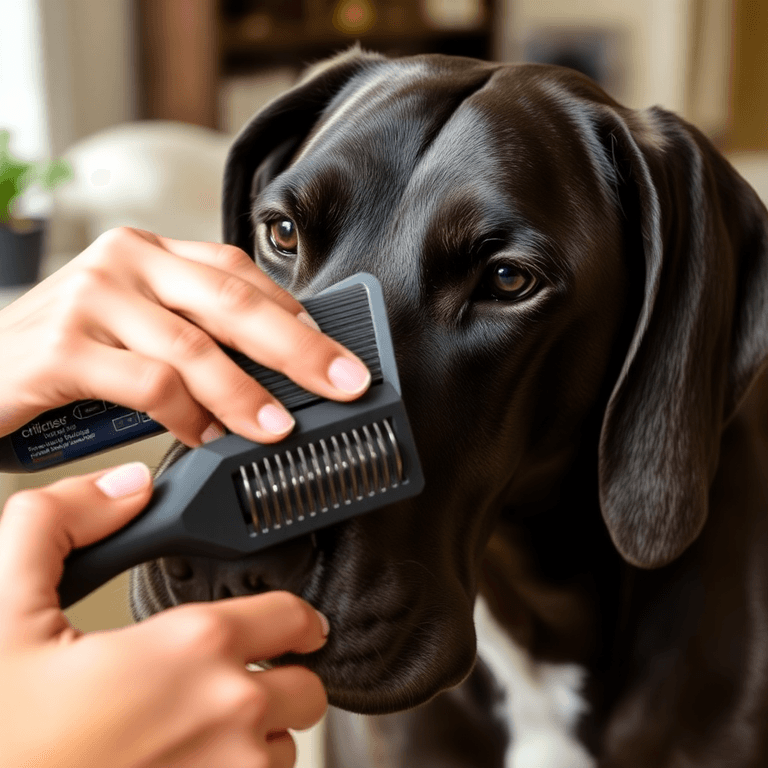
Best Brush for a Great Dane
Woof! Let me tell you about the brushes that work best on my huge coat. I’m a Great Dane, so I know what I’m talking about!
My humans use three different brushes on me, and honestly, I love the attention. First, there’s this rubber curry comb thing. It feels like getting a massage! It gets down into my thick undercoat and doesn’t make my fur all staticky like those plastic brushes do. Plus, it’s bouncy and fun – sometimes I try to play with it.
Then there’s this rake tool with spinning teeth. Sounds scary, but it’s actually pretty cool! When I’m shedding like crazy (which happens A LOT), this thing reaches way down deep into my fur. It pulls out all that loose hair that would otherwise end up on the couch. My mom likes that part.
The last brush is made of bristles, and it makes me look super shiny and handsome. It spreads around the natural oils in my coat so I look like a show dog. I always strut around the house after getting brushed with this one.
When shedding season hits and I’m leaving hair tumbleweeds everywhere, using all three brushes together works like magic. Trust me – I’ve been the test subject for lots of brushing experiments, and this combo is the winner!
Understanding Great Dane Coat Characteristics and Grooming Needs
Hi there! I’m a Great Dane, and let me tell you about my amazing coat and why my humans spend so much time brushing me.
I have what people call a “double coat.” That’s just a fancy way of saying I’ve two layers of fur – kind of like wearing a t-shirt under a jacket! The top layer has guard hairs that are tougher, and underneath I’ve softer, fluffier fur that keeps me cozy.
My double coat is like wearing a cozy outfit – tough guard hairs on top with soft, fluffy undercoat keeping me warm!
Now, here’s something that might surprise you – I’m HUGE, but I don’t need baths every week like some of my smaller doggy friends. Lucky me!
But I do shed quite a bit, especially twice a year when the seasons change. My humans call this “coat blowing,” which sounds way more exciting than it is. I’m not blowing anything – I’m just dropping fur everywhere!
During spring and fall, I turn into a fur-making machine. My family has to brush me every single day during these times, or else our house looks like a fur tornado hit it.
The rest of the year, they brush me about 2-3 times a week, which I love because it feels like getting a massage.
The tricky spots are around my collar area, my legs, and my back end where my fur can get tangled up. Since I’m so big, my humans need special brushes that can reach through both layers of my coat without taking forever. Regular grooming is essential for managing my moderate shedding, so nobody wants to spend three hours brushing a dog my size – not even me, and I love the attention!
Top Brush Types Recommended for Great Dane Coats
Woof! Let me tell you about the brushes that work best on my fabulous Great Dane coat. Trust me, I’ve been on the receiving end of plenty of brushing sessions!
Three types of brushes feel good and don’t make me want to run away and hide behind the couch. First up are bristle brushes – these babies are like getting a nice massage! They spread around my natural oils (yeah, I make my own coat conditioner) and pick up all the dust and dirt I collect during my adventures.
Next are those squishy rubber brushes that look kind of weird but feel amazing. My humans call them curry combs, but I know they feel like gentle scratches all over. They’re perfect for everyday brushing and grab all my loose fur without being mean about it.
Now here’s the big one – those special brushes for when I’m shedding like crazy. Twice a year, I turn into a fur tornado, and these magic tools reach down into my undercoat to pull out all that loose hair. It’s important for my humans to stay on top of grooming, as regular grooming routines help maintain my overall health and wellness.
Sure, it’s a little embarrassing to shed so much, but at least it ends up in the brush instead of decorating every piece of furniture in the house. My humans seem pretty happy about that!
Bristle and Rubber Brushes
The Best Brushes for My Beautiful Coat****
Woof! Let me tell you about the brushes that make my coat look absolutely amazing. As a Great Dane, I’ve short fur that’s pretty thick, and I need the right tools to keep it looking great.
There are two types of brushes that work best on dogs like me – bristle brushes and rubber brushes. Each one does different things to help me look and feel my best!
Why I Love Bristle Brushes
These brushes are fantastic because they distribute my natural oils evenly throughout my fur. This makes my coat super shiny and soft – perfect for when I want to show off!
The bristles (especially the ones made from boar hair) are great at picking up any little bits of stuff stuck in my fur. Additionally, they feel really good on my skin and help improve my blood flow.
Why Rubber Brushes Are Awesome Too
Rubber brushes do three cool things for me:
- They stop static electricity – You know that annoying zappy feeling? These brushes make it go away so dirt and dust don’t stick to me as much.
- They get deep into my fur. The rubber bumps are bendy and can reach down to grab all the loose hair that’s hiding underneath.
- They give me a massage – This feels incredibly relaxing and helps improve my blood flow, making me feel less stressed.
My humans alternate between the two types of brushes when they groom me every week. This keeps my coat healthy and makes me one happy, handsome Great Dane! Additionally, regular grooming is essential for maintaining my overall well-being and preventing skin issues.
De-shedding Tool Options
Look, I know you love me, but let’s be honest about my shedding situation. I’m a walking fur factory, especially when the seasons change. Spring and fall? Forget about it! I shed so much you could probably knit a whole new dog.
Here’s the thing – I’ve got a double coat that looks awesome, but it comes with some maintenance issues. You’ll need some special tools to handle my fur situation. Those regular brushes? They’re cute, but they’re not going to cut it.
Get yourself one of those undercoat rakes with the spinning teeth. They’re like tiny excavators that dig through my top fur to grab all the loose stuff underneath. Pretty cool, right? And those FURminator things with the curved edges? They fit my big body perfectly! Just don’t go crazy with them – my skin doesn’t appreciate being scraped raw.
During my big shedding seasons, you’ll want to brush me every single day. Trust me, it’s better than finding tumbleweeds of my fur rolling around your house like we live in the Wild West. When I’m not going through my dramatic fur-dropping phases, twice a week should keep things under control.
Here’s my pro tip: work on me in sections, maintain steady pressure, and brush in the direction of my fur growth. Start with a slicker brush to get the surface stuff, then bring out the big guns with the undercoat tools. This way, you get maximum fur removal while keeping my coat healthy and shiny! Remember, consistency in grooming is just as important as consistency in training for my overall well-being!
Material and Design Features That Matter Most
What Makes a Good Brush for My Giant Self
Listen up, humans! As a Great Dane who has been brushed more times than I can count (which isn’t very high, considering I’m a dog), I know what works and what doesn’t when it comes to grooming tools.
There are three key factors that make a brush perfect for giants like me: the type of bristles used, the ease of holding the brush, and whether it can withstand my massive coat without falling apart.
The Bristle Stuff
First, let’s talk about bristles. Natural boar bristles are pretty awesome because they spread around my natural oils and make my coat super shiny. I like looking good!
Stainless steel pins are great too because they can get through my thick undercoat without breaking off in my fur. Trust me, nobody wants broken bristles stuck in there. Fake bristles work okay, but they don’t make me as glamorous as the natural ones. A good brush should also be designed to effectively manage the shedding characteristic of Great Danes, ensuring my coat stays healthy and looking its best.
Handle Comfort (For My Human’s Sake)
My humans need a brush that won’t make their hands hurt after brushing all of me – and there’s A LOT of me to brush!
The best brushes have rubber grips that won’t slip when things get hairy (literally). The handle should feel good in big hands and little hands because sometimes the kids want to help brush me too.
Tough Enough for a Big Dog
Here’s the thing – I’m huge, and my coat is thick. Wimpy brushes just don’t cut it.
The best brushes have strong metal backing and pins that stay put even when my human is working through a tough tangle. Nobody wants a brush that falls apart halfway through grooming this magnificent beast!
Proper Brushing Techniques and Safety Considerations
How to Brush Me (Your Great Dane) Without Making Me Grumpy
Hey there, human! It’s me, your gentle giant Great Dane. Let me tell you the secrets to brushing my magnificent coat without turning me into a wiggling, whining mess.
First things first – figure out what kind of fur I have. If my coat is smooth and shiny, brush me once a week. If it’s a bit rougher and thicker, I need to brush twice a week. Trust me, I’ll let you know if you’re slacking!
Always brush your hair in the same direction it grows. Don’t go backwards – that feels weird and makes me want to escape to my favorite hiding spot (which is pretty hard to find when you’re my size).
| What You Should Do | Keep Me Safe | Pro Tips From a Dog Who Knows |
|---|---|---|
| Start at my neck and work down | Check if my skin looks red or angry | Press firmly, but don’t make me yelp |
| Save brushing backwards for last | Make sure I’m not losing too much fur | Spend extra time on my trouble spots |
| Don’t forget my legs and chest | Look out for tangled fur knots | Keep a steady rhythm – it’s relaxing |
| Finish with something nice for my coat | Make sure I’m happy the whole time | Write down when you brush me |
When you brush me regularly, my skin stays healthy, my coat looks awesome, and we get to spend quality time together. Plus, I get to show off my beautiful fur to all the neighborhood dogs! Also, regular brushing can help prevent obesity-related issues as it encourages physical interaction and bonding time between us.
Seasonal Shedding Management and Grooming Frequency
My Crazy Hair Days – A Great Dane‘s Guide to Shedding
Hi there! I’m a Great Dane, and boy, do I’ve something to tell you about my hair! Twice a year – in spring and fall – I turn into a giant fur factory. My humans call it “shedding season,” but I like to think of it as my way of redecorating the house!
During these wild hair times, my family has to work extra hard to keep up with all my loose fur. Here’s what they do to help me look my best:
My family becomes my personal grooming squad when I transform into a walking fur tornado twice a year!
Daily Brushing Time
Every single day during my big shed, someone grabs this cool tool called an undercoat rake. It feels like getting an excellent back scratch! They brush all my loose hair out before it ends up on the couch, their clothes, and somehow even in their food. Oops!
Special Grooming Tools Every Two Weeks
My humans use this amazing gadget called a FURminator. Sounds scary, right? But it’s pretty awesome! It gets deep into my thick coat and pulls out all the dead hair that’s just hanging around. I always feel so much lighter afterward!
Professional Spa Days Once a Month
The best part of the shedding season? I get to visit the groomer more often! They make me look super handsome and help keep my skin healthy. Plus, they’re really good at removing substances that cause sneezing.
When I’m not in full shedding mode, my humans only need to brush me two to three times a week. Much easier for everyone! My feathery leg hair stays nice and tangle-free this way too. It’s important for my humans to stay on top of regular grooming schedules to maintain my coat’s health.
Trust me, if you have a Great Dane like me, you’ll want to follow this plan. Your vacuum cleaner will thank you!
Essential Grooming Tools Beyond Basic Brushes
The Grooming Tools That Make This Big Dog Look Fantastic
Woof! Let me tell you about the special tools my humans use to keep me looking like the handsome Great Dane I am. Trust me, regular brushes just don’t cut it when you’re as big and fluffy as me!
| Tool | What It Does |
|---|---|
| De-shedding rake | Gets out my thick undercoat when I’m shedding like crazy |
| Grooming mitt | Quick touch-ups when I don’t have time for a full spa day |
| High-velocity dryer | Blows me dry super fast (and feels amazing!) |
| Big dog nail clippers | Trims my giant toenails so I don’t scratch the furniture |
My humans have figured out that I require different grooming depending on my coat type. If I have short fur, they use that de-shedding rake on me once a week. But if I’m one of those Great Danes with longer hair, they give me the complete treatment every two weeks.
That high-velocity dryer is my favorite part! It’s like standing in front of a giant fan, and it gets all the loose fur flying everywhere. Way better than those wimpy regular blow dryers. Plus, my humans love those grooming mitts because they can give me quick brush-outs between my big grooming days. It’s like getting pets and grooming at the same time – win-win! Regular grooming is essential for maintaining a healthy coat and can help prevent common health issues that Great Danes often encounter.
Maintaining Your Grooming Equipment for Long-Term Use
Listen up, fellow giant pups! Your humans spent good money on those brushes and nail clippers, so let’s help them keep that stuff working properly. Trust me, you don’t want them using a broken brush on your beautiful coat!
After every grooming session (when they make us look all fancy), your human needs to clean those tools. Hair gets stuck everywhere – in the bristles, between the teeth of combs, even in places that seem impossible. It’s like when we shed all over the couch, but in reverse!
Tell your human to store brushes and combs in a dry place where the bristles won’t get squished. Nobody wants a bent brush poking them during grooming time. That’s about as fun as stepping on our own giant paws!
Watch for warning signs that tools need replacing. If bristles start falling out like our fur in summer, or if handles crack under the pressure of brushing our massive bodies, it’s time for new equipment. Broken tools make grooming harder for everyone. Remember, regular inspection of grooming tools can help avoid safety hazards that could affect our grooming experience.
Keep those grooming supplies happy, and they’ll keep us looking like the magnificent, gentle giants we are. Plus, well-maintained tools mean shorter grooming sessions, which means more time for important things like napping and eating!
Proper Cleaning Techniques
How to Keep My Brushes Clean (So They Don’t Get Yucky!)
Hey there! It’s me, your friendly neighborhood Great Dane. Now that my humans got me some awesome brushes, I need to teach them how to keep those things clean.
Trust me, nobody wants a dirty brush going through this beautiful coat of mine!
My humans need to clean my brushes the right way if they want them to work good and last a long time. Plus, I don’t want any gross germy stuff getting on my fur. Yuck!
Here’s what I’ve trained my humans to do:
Every Day After Brushing Me – Right after they finish making me look fabulous, they grab a metal comb and pull out all my loose fur from the brush.
If they don’t do this, my fur gets all tangled up in there and makes a big mess!
Once a Week for Deep Cleaning** – My humans fill up a bowl with warm soapy water** and let my brushes soak for about 10 minutes.
Then, they scrub the bristles with an old toothbrush to remove all the oils and skin flakes. I know it sounds gross, but that’s what happens when you’re this magnificent!
Once a Month for Super Clean – This is when they use a special doggy-safe cleaning spray to kill any germs hiding in my brushes.
This keeps me healthy and happy! Regular grooming also helps maintain my overall well-being, ensuring I stay in tip-top shape!
If my humans follow these steps, my brushes stay nice and clean, and I stay looking like the handsome giant I am!
Storage Best Practices
Storage Best Practices
Three super important things keep my grooming tools working great: keeping them dry, protecting them from getting damaged, and ensuring my humans can find them easily.
My family keeps all my grooming stuff in a special spot where it’s not too hot or cold. They make sure it stays pretty dry too – less than half as humid as a steamy bathroom! They even put these little packets that soak up moisture in my brush boxes. This prevents my metal tools from rusting and keeps the brush bristles from becoming misshapen.
What is the best way to store my brushes? In boxes with separate compartments for each tool. It’s like having tiny apartments for all my grooming buddies. My humans hung up a board with hooks on the wall, too. This way, everything has its own space and doesn’t get squished together.
Whatever you do, don’t use plastic bags – they make everything soggy and gross!
Here’s a pro tip from this big guy: always store brushes with the bristles pointing up. It keeps them nice and straight!
And please, make sure everything is completely clean and dry before putting it away. Nobody wants stinky, wet brushes!
Oh, and put labels on everything! When you’re my size, grooming takes a while, so having organized tools makes bath time way faster for everyone.
Tool Replacement Signs
When My Human Needs New Grooming Tools****
My grooming tools don’t last forever (trust me, I put them through a workout!). My human needs to know when to replace them so my gorgeous coat stays healthy and shiny.
Here’s what my human should watch for:
- Brush bristles getting wonky – When those bristles start looking bent, frayed, or falling out, they can’t do their job right. They won’t spread my natural oils around or remove all my loose fur. That means I’ll look less magnificent than usual!
- Metal pins getting rough – If those metal pins get rusty, bent, or lose their little round tips, they might scratch my sensitive skin. Ouch! Plus, they won’t pick up all the stuff in my coat.
- Handles falling apart – Cracked handles or wobbly parts are dangerous and make it hard for my human to brush me properly. Nobody wants that!
My human will know the tools need replacing when I shed more between grooming sessions, and it takes forever to brush me.
Good-quality tools usually last about 12-18 months, while cheaper ones typically last 6-8 months.
Trust me, new tools make grooming time much better for both of us!
Questions
Can I Use the Same Brush on My Great Dane Puppy?
Woof! Listen up, humans! You can’t use the same brush on me my whole life – that would be like wearing the same collar from when I was a tiny pup to now when I’m a small horse!
When I was tiny and fluffy, I needed those super soft brushes because my baby fur was delicate. Those gentle bristles felt like being petted by a cloud! But now that I’m getting my big-dog coat, I need the tough stuff. Those slicker brushes and undercoat rakes might sound scary, but trust me – they feel amazing when you’re dealing with my thick adult fur.
Think of it like this: you wouldn’t use a toothbrush to brush your hair, right? Well, using a puppy brush on my grown-up coat is just as silly! My adult fur is significantly thicker and requires stronger brushes to get through all the fluff. Plus, I’m getting SO much bigger that those tiny puppy brushes would take forever to cover all of me!
How Much Should I Expect to Spend on Quality Brushes?
Woof! Let me tell you about brush shopping from a Great Dane who knows a thing or two about grooming.
So you want to buy brushes for your giant furry friend? Well, you better open that wallet! Plan to spend $15-$ 60 on high-quality brushes. Trust me, cheap brushes break when they come into contact with my thick coat.
Those slicker brushes that get my undercoat? They cost $20-40. The pin brushes that make me look fancy? Those are $15-30. I know it sounds like a lot of money, but think about it this way – I’m the size of a small horse!
If you brush me every day (which I love, by the way), you’ll want the fancy brushes with comfy handles. Your human hands will thank you! Plus, good brushes last longer. I’ve seen cheap brushes give up after one brushing session with me. They take one look at all my fur and just quit!
The expensive brushes have tough bristles that don’t bend when they come into contact with my thick coat. They also have handles that won’t hurt your hands during our long brushing sessions. Because let’s be honest – brushing me takes forever. I’m huge!
Will Regular Brushing Help With My Great Dane’s Dry Skin?
Woof! Let me tell you about brushing from a Great Dane who knows a thing or two about it. When my human brushes me every day, it’s like getting a spa treatment! The brush awakens these tiny oil-producing glands under my skin, called sebaceous glands. They’re like little workers that pump out natural oils to keep my coat shiny and soft.
I love daily brushing because it feels amazing and helps spread those oils all over my giant body. Plus, the brush gets my blood flowing better under my skin, which is like doing exercise without having to run around the yard. The best part? It scrapes away all the yucky dead skin bits that make me itchy and dry.
Trust me, as a dog the size of a small horse, I need all the help I can get keeping my skin happy. Daily brushing is one of the best tricks to fight dry skin, and I get to spend quality time with my favorite human, too!
Can Brushing Reduce My Great Dane’s Anxiety During Grooming Sessions?
Woof! Let me tell you about grooming time – it used to be SCARY! But my humans figured out some cool tricks that made everything better.
First, they started brushing me just a tiny bit every day. Like, super quick at first – maybe just my back for a minute. Then they gave me treats! Best deal ever! Now I wag my tail when I see the brush coming because I know yummy things are about to happen.
My humans are brilliant. They use something called “baby steps,” which is amusing because I’m definitely no longer a baby at 150 pounds! But they take everything slow. First, just touching the brush to my fur, then a few gentle strokes, then more and more. If I start getting worried, they stop and give me pets, telling me I’m a good boy.
The best part is that brushing now happens all the time, not just during full grooming sessions. So it’s not this big scary thing anymore – it’s just normal! Like eating breakfast or taking a walk. My humans always use the same gentle voice and do things the same way, so I know what’s coming next.
Now, when grooming day comes around, I’m way more chill because brushing isn’t weird anymore. It’s just another Tuesday! Plus, I’ve learned that grooming people gives treats too. Win-win!
Should I Brush My Great Dane Before or After Exercise?
Woof! Let me tell you about brushing from a Great Dane’s perspective.
After I run around and play, my body gets all warm and my blood pumps faster. This makes me shed way more fur – like 25% more! That’s a lot of hair floating around, trust me.
Here’s what works best for us, giant pups: First, give me a good brushing before we go out to play. This gets rid of any leaves, dirt, or other debris I might have picked up. Then, after our fun time, wait until my coat is dry. I know it’s hard to wait when I look so fluffy, but wet brushing is no fun for anyone!
Once I’m dry, that’s when the magic happens. All that loose undercoat from my workout adventure comes out super easily. It’s like a fur explosion! My humans always look shocked at how much comes off my brush. I just wag my tail because I feel so much lighter and cooler.
Plus, this two-step brushing routine means fewer fur tumbleweeds rolling around the house. Your vacuum cleaner will thank you, and I’ll be the most handsome Great Dane on the block!
Final Thoughts
Hey there, humans! It’s me, your favorite gentle giant, and I need to tell you about my fur situation. Trust me, I know my coat better than anyone – I wear it every day!
So here’s the deal with my fur. I have what you call a double coat, which is just a fancy way of saying I have two layers of hair. Yes, I wear a fur jacket all the time. Pretty cool, right? But here’s the thing – all that fur has to go somewhere, and that somewhere is usually YOUR couch, YOUR clothes, and YOUR carpet. Oops!
Now, about those brushes you humans wave around. I’ve tested plenty of them (with my body, obviously), and let me tell you – not all brushes are created equal. You need one of those slicker brushes with the right amount of bristles. Too few bristles and you’re just tickling me. Too many, and it feels like you’re trying to scrape barnacles off a boat!
The handle matters, too, people! If your hand gets tired after five minutes, how do you think I feel standing there while you figure out your grip? Get a brush that feels good in your hand because we’ve got a lot of ground to cover. I’m not exactly pocket-sized here.
Here’s my pro tip: brush me regularly, and we’ll both be happier. When you wait too long, my fur gets all tangled up, and then brushing becomes this whole dramatic production. Plus, if you keep up with it, maybe I won’t leave quite as many fur tumbleweeds rolling around your house. You’re welcome!
References
- https://www.great-dane-dog-breed-store.com/kennel-accessories-c-8/comfy-great-dane-brush-for-everyday-grooming-brush–go-p-538.html
- https://www.danegoodblog.com/de-shedding-grooming-your-great-dane/
- https://grdane.com/best-brush-for-a-great-dane-2/
- https://www.all-about-great-dane-dog-breed.com/kennel-equipment-c-8/bristle-wooden-great-dane-brush-with-a-nylon-handle-p-621.html
- https://www.furminator.com/solution-center/dogs/great-dane.aspx
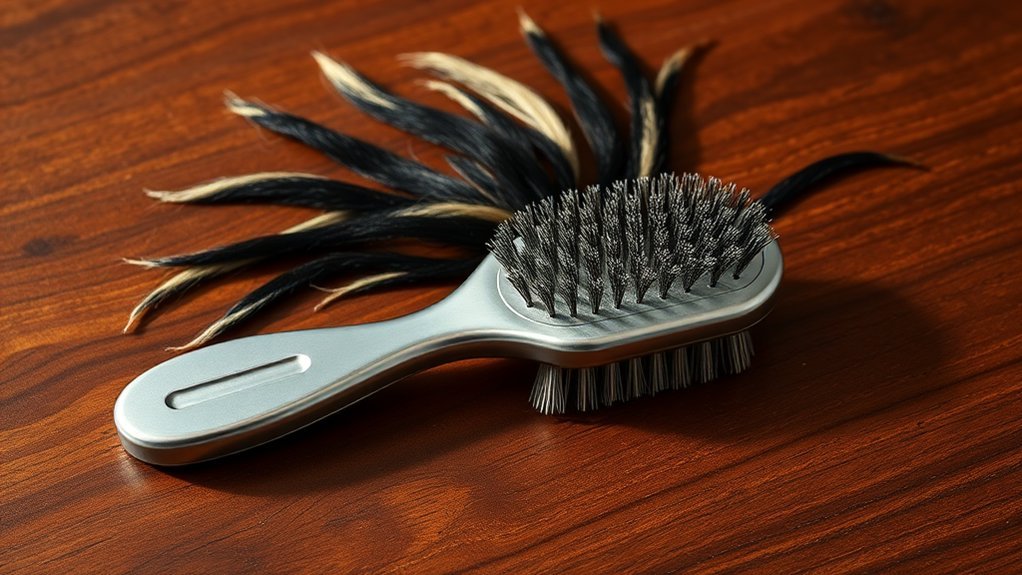
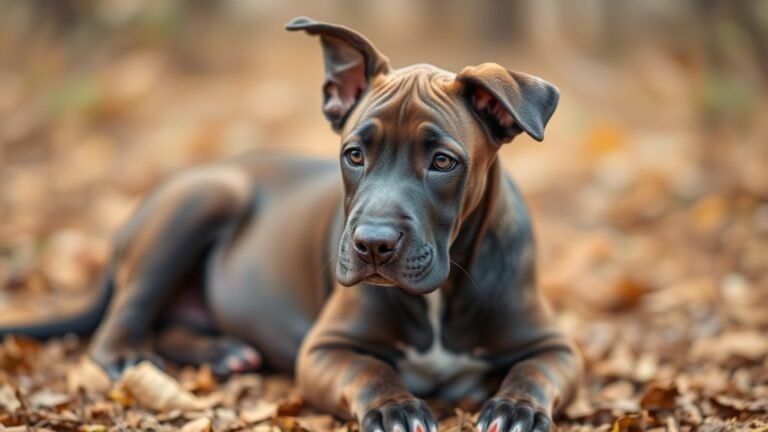
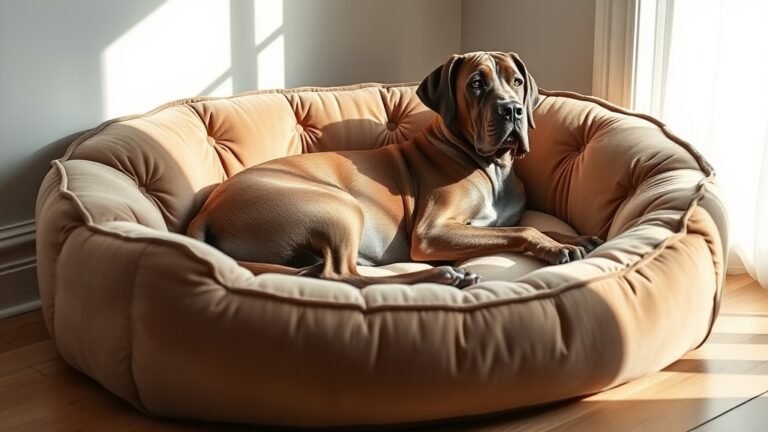

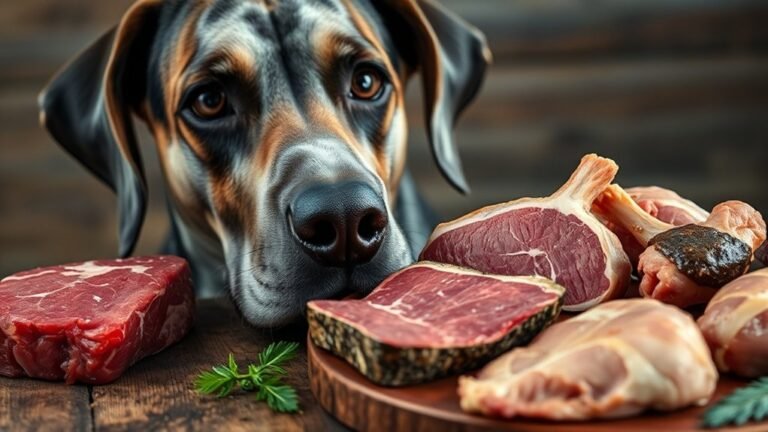


4 Comments